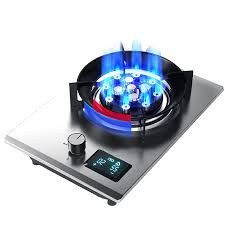The gas that heats your oven or powers your central heating may have travelled thousands of miles to reach you. Natural gas is extracted from the earth by companies that drill thousands of feet into the ground and use big wells and pumps to bring it up. They then send it to towns through large pipes that are buried underground. From there, gas distributors transport it through smaller pipelines that connect to homes. The gas reaches your house through a line that terminates at the meter outside your home and more pipes carry it inside to your gas appliances.
Natural gas has a unique property that gives it the ability to fill containers of any size and shape, just like liquids do. But unlike liquids, gases can fill the container evenly because their molecules can move more freely than those of solids.
When gas flows into your home, it is much more pressured than the air inside, which enables it to be converted to energy for heating and cooking. The gas enters your house through a gas pipe called a service line, which is typically black with metallic connectors. If your home is hooked up to natural gas, your local utility company will maintain this line and monitor the gas meter on your property. For a Gas Meter box, go to meterbox.co.uk/gas-meter-boxes
Once the gas reaches your house, it goes through a regulator to reduce its pressure to 0.25 pounds per square inch. This is the safe pressure at which you can use the gas in your appliances. The gas then enters your meter, which is kept by the utility company who monitors your gas usage, and more pipes connect from the meter to your appliances, such as your gas stove, furnace, hot water heater and clothes dryer.
Most gas lines are made from steel and are painted black with a metallic surface. However, flexible connectors can be used when necessary in areas where the line passes through a crawl space or other tight spaces. In some areas, the pipes are buried in concrete. They’re also commonly installed under pavements, driveways and streets. The pipes are protected from freezing temperatures by insulating covers.
In the event of a leak, you should always know where your gas shutoff valve is so you can stop the flow of gas quickly. If you don’t, call a professional immediately to find it for you. Never attempt to do this yourself unless you are experienced with plumbing and understand the dangers of tampering with gas pipes.





